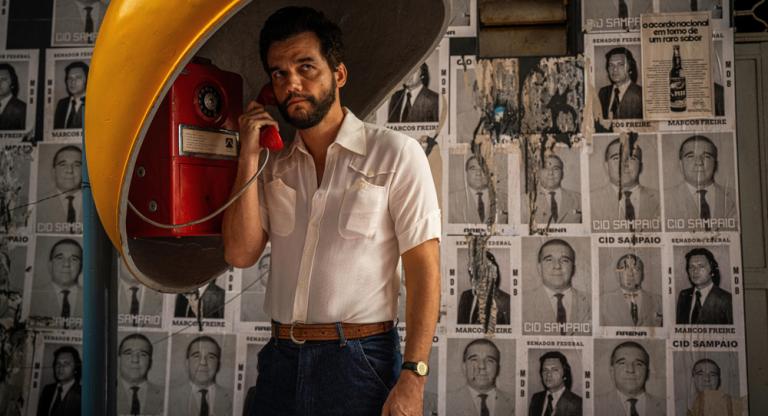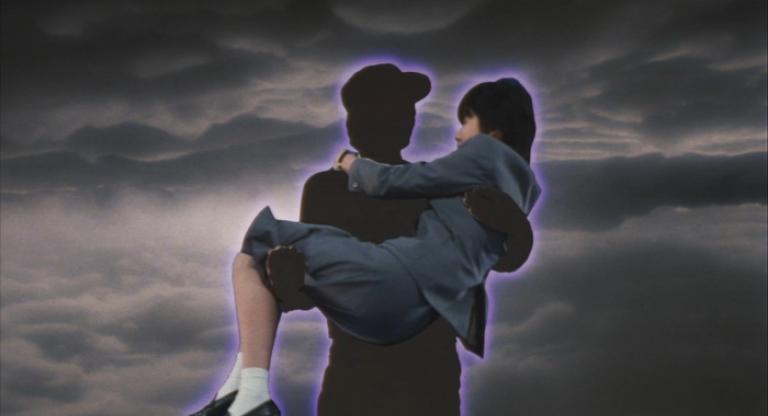Seeing any of Gregory J. Markopoulos’ films on celluloid—be it his better-known psychodramas, his many filmic portraits of his New York and European artistic contemporaries, or the occasional study of an individual place, such as Il Castello Roccasinibalda in Gammelion (1968)—is always a rare treat. Many undertake the pilgrimage to Lyssarea, Greece—where three-hour sequences of Eniaios, his life’s work that amount to over 80 hours of collected material, are screened at four-year intervals—for the privilege of doing so. Since Markopoulos pulled all of his films from distribution in the early 1970s, the filmmaker’s reputation has grown to almost mythic proportions and screenings of the original work have become exceedingly few and far between.
The three early films that constitute Du sang, de la volupté et de la mort—Psyche (1947), Lysis (1948), and Charmides (1948)—were produced in Markopoulos’s student days at the University of Southern California, an impressive display of an artist seeking to developing their cinematic vision in real time. With each film, one gets a sense of Markopoulos becoming more confident in his abilities, and one can mark the progression from these initial experiments to the masterpieces he would go on to make some two decades later. Markopoulos filmed Psyche around Los Angeles and the Hollywood Hills, his stomping grounds for a total three academic semesters before dropping out of USC. (A brief teaching stint at school of the Art Institute of Chicago, some two decades later, was a similarly unfulfilling experience for the anti-institutional Markopoulos). The most immediate point of formal comparison is with a handful of lush Technicolor melodramas from the late 1950s—especially in regards to the film’s frequent high contrast lighting and intoxicatingly oversaturated colors, the latter of which Markopoulos described as “reflect[ing] the true character of the individual before us.” Yet, it's the film’s often uncomfortable extreme close-ups between a nameless couple destined to fall for one another that feels most striking, mainly in regards to how Markopoulos plays with skewed camera angles in his initial unnerving shot-reverse-shot compositions.
While the film is inspired by Pierre Louÿs’s unfinished novella Psyché, its connection to the original text is only tangential, serving as a starting point for the ensuing drama. The fragmented nature of the film’s loose narrative, in which the couple’s increasingly fraught interactions reach a heated climax of bodily passion, is feverish and slowly unraveling—where several rapid cuts between several sexually-charged interchanges, both real and imagined (a precursor to the type of violent montage that would later define Markopoulos' style), suggests an erasure between the boundaries of truth and fiction. Markopoulos would later claim, along with many other grandiose statements in his usually highly-critical writings, that filmmakers should “seek neither Fantasy nor Reality”; with Psyche, he achieved that platonic ideal on his first go at semi-professional movie making.
The other two films in the program, by contrast, take on a more muted color palette and engage with their original sources of inspiration in a more minimalist fashion. This could be due to Markopoulos having stitched Psyche together after shooting had wrapped up, while Lysis and Charmides were edited in camera as he went along (an economic technique Markopoulos would further hone in the late 60s), requiring him to pare down some of Psyche's more baroque elements. The latter two were also shot in his hometown of Toledo, Ohio, a decidedly less picturesque locale from which to draw creative inspiration. Lysis kicks off with some fraught, stabbing piano chords and proceeds in a similarly anxious register, a glimpse into the tortured psyche of one solitary individual, played by Markopoulos himself. Charmides is just as spartan, and suffers from being the least developed of the three; still, as far as what’s seen in most student films—the blatant regurgitation of well-worn ideas done better elsewhere—it presents a wholly original perspective on the possibilities of what cinema can accomplish when removed from the strict confines of classical narrative structure. All in all, not bad for a 20-year-old.
Du sang, de la volupté et de la mort screens tonight, August 29, at Light Industry on 16mm, following an introduction by the scholar P. Adams Sitney.



